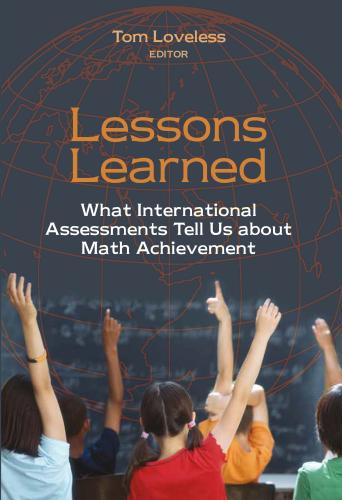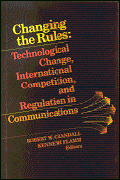The mathematics discipline usually strikes fear into the hearts of most students and working-age adults in the U.S. A Google Scholar search of the terms “mathematics,” “students,” and “fear” returned 237,000 academic publications offering commentary on the subject; it is therefore not a stretch to assume that ‘math anxiety’ may be partially to blame for statistics such as the U.S. ranking 31st out of 35 OECD countries in mathematics, a position that has remained mostly stable since 2003 per the OECD’s 2015 Program for International Student Assessment student survey. The same survey revealed that 29 percent of 15-year-old students in the U.S. “were unable to attain Level 2 mathematics proficiency.” In other words, nearly 1 in 3 students cannot demonstrate basic abilities in formulating, applying, and interpreting mathematical concepts. A sobering one-third of our students are unable to speak the new language of the digital workplace: mathematical literacy.
A large body of reports has repeatedly sounded the alarm about skilled-worker shortages. IBM, for instance, recently projected that the number of data science and analytics (DSA) positions are expected to exceed 2.7 million by 2020. According to IBM, “[a]s demand for DSA workers grows, this growth puts pressure on the supply of DSA talent to grow in turn.” Policy solutions and proposals are not in short supply and tend to call for increased workforce training and STEM education investments. Despite detailed analyses on the profound changes in the labor market spurred by technological advances, there has been little appreciation for the growing link between mathematics and work. The (mostly invisible) ubiquity of mathematics in the workplace is a consequence of the integration of advanced technologies and digital tools into the professional sphere, essentially requiring workers to communicate through math-centric dialogues. Given that mathematics is effectively unavoidable in the future workplace, those spearheading our education agenda must prepare the emerging workforce with mathematical literacy.
Mathematical literacy in the workplace involves communicating in a language that blends formal and informal mathematics and mathematical reasoning. Put simply, this form of literacy includes translating mathematical concepts and knowledge into plain-language insights, solutions, or products for employers or clients, which carries significant implications for our overall approach to education and workforce training.
Take, for example, middle-skilled occupations; these jobs typically require some education beyond high school but not more than a 4-year degree. Jobs in the health, manufacturing, sales, and transportation industries usually fall under this category. Technology has transformed virtually all jobs in these sectors. The U.S., of course, is not alone in this trend: according to Jarvis, Kozuskanich, Law, and McCullough (2015), demographic and technological changes in the Canadian health industry have contributed to emerging demand for techno-numerate nurses.[1] Jarvis et al. urged baccalaureate nursing programs to focus proactively on incorporating computational and conceptual mathematics along with information and technology literacy. Such competencies are increasingly shaped by the broadening adoption of technological tools and telemedicine.
More than a decade before the work of Jarvis et al. (2015), Magajna and Monaghan (2003) studied the workplace mathematics that machine technicians in a Slovenian glass factory used when producing a bottle mold.[2] The authors sought to explain the mathematical thinking and reasoning the vocationally trained technicians applied to determine the volume of a mold template used in fulfilling a client’s order. They observed that the technicians relied on approximate rather than exact volume calculations, which they frequently debated along with errors and workarounds. In other words, formal (i.e., school-based) mathematics did not align fully with their applied workplace mathematics. Further, the technicians’ mathematical formulations were largely shaped by the software and technological tools (namely machines and lasers) available to them. Per the authors, “[t]he mathematics [the technicians] were really doing, their work mathematics, was inextricably joined with the technology they used.”
Since 2003, the work of machine technicians in manufacturing has been revolutionized by 3D printing; this innovation requires machinists to negotiate the volume of 3D solids. 3D printing technology has also left an indelible mark on the fine arts and fashion industries. Even so, we are light years away from AutoCAD software being standard in a traditional high-school geometry class.
The key takeaway from these lines of research is that mathematics literacy is an essential competency. Nurses, machine technicians, marketing sales representatives, and even human resource specialists must understand the ‘black-box’ mathematics hidden in artificial intelligence (AI) tools and software programs that complement their work. Employees’ added value derives from their human ability to interpret, rationalize, and negotiate approximate solutions and to communicate algorithmic outputs in an easily understandable way. Perhaps when employers list critical thinking and communication on their workforce wish list, this is the kind of the communication they mean.
The aforementioned studies and others raise complex epistemological questions as to the kind of mathematics we should be teaching. For instance, the computational superiority of computers should prompt conversations on reconsidering curricular models that overemphasize computational skills at the expense of conceptual understanding. Gravemeijer, Stephan, Julie, Lin, and Ohtani (2017) concurred, suggesting it may be time to consider the provocative propositions of mathematics educator Zalman Usiskin, who argued that “since computer algebra systems on handheld calculators can conduct trinomial factoring efficiently … manual factoring should be deleted from the curriculum.”[3]
Moreover, if technology is changing the way work is organized, then we should seriously consider accelerating the inculcation of digital technologies into classroom settings across all disciplines. The example of the machine technicians’ production process sheds light on the role of mathematics as well as the influence of technological tools, either as a constraint or enhancement, on mathematical reasoning and computation. Just as digital technologies have changed the organization of work, digital mathematical technologies can re-shape the way we teach, learn, and apply mathematics. To that end, the appropriate integration of digital technologies into teaching practices can promote mathematics learning and mastery while training students’ math-related oral and written reasoning skills. Regardless of the research genesis, mathematics in the workplace is inescapable; as such, we must find ways to improve the quality of mathematics literacy among society at large.
[1] Jarvis, Daniel H.; Kozuskanich, Andrea; Law, Barbi; and McCullough, Karey D. (2015) “The Techno-Numerate Nurse: Results of a Study Exploring Nursing Student and Nurse Perceptions of Workplace Mathematics and Technology Demands,” Quality Advancement in Nursing Education – Avancées en formation infirmière: Vol. 1: Iss. 2, Article 5.
DOI: https://doi.org/10.17483/2368-6669.1024
[2] Magajna, Z., & Monaghan, J. (2003). Advanced mathematical thinking in a technological workplace. Educational Studies in Mathematics, 52(2), 101–122. https://doi.org/10.1023/A:1024089520064
[3] Gravemeijer, K. Stephan, M., Julie, C. et al. (2017). What Mathematics Education May Prepare Students for the Society of the Future? International Journal of Science and Mathematics Education, 15 (Suppl 1), 105-123. https://doi.org/10.1007/s10763-017-9814-6
The Brookings Institution is committed to quality, independence, and impact.
We are supported by a diverse array of funders. In line with our values and policies, each Brookings publication represents the sole views of its author(s).











Commentary
The 21st century digital workplace makes mathematics inescapable
September 11, 2018